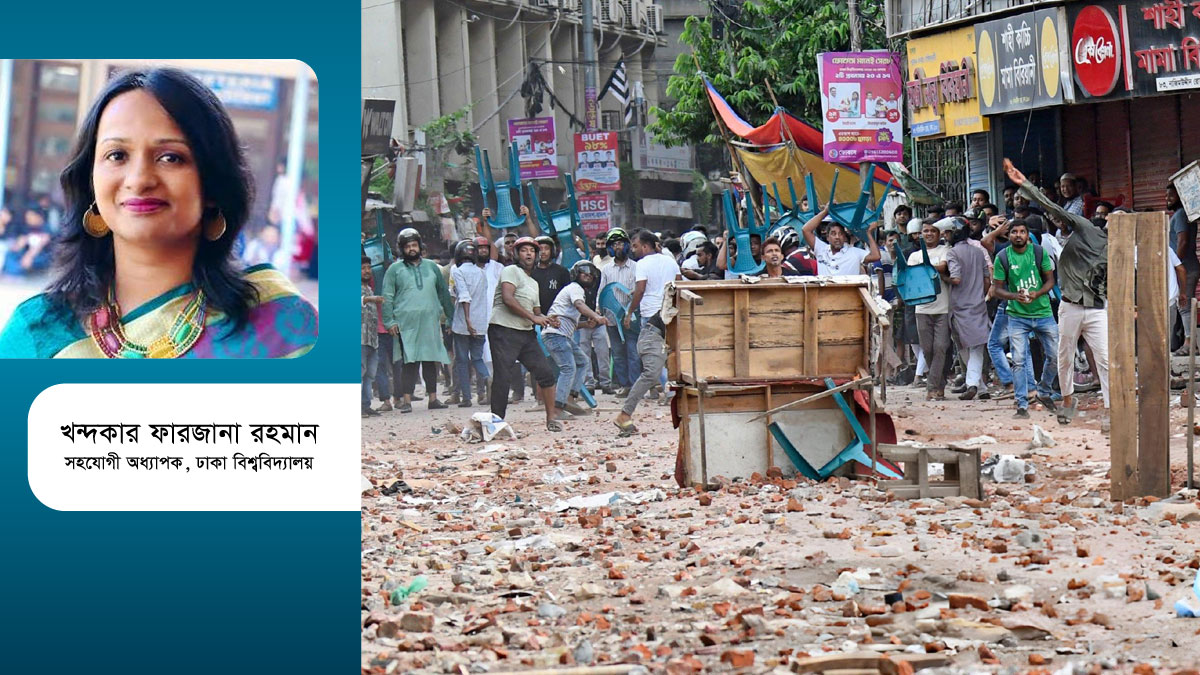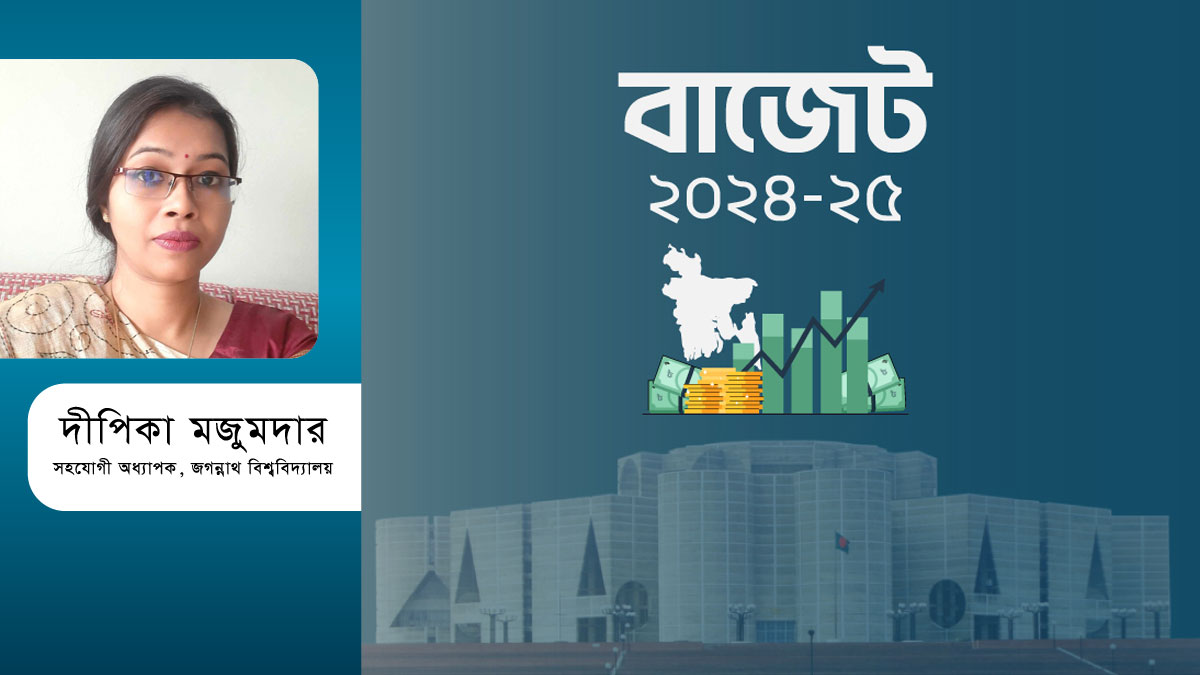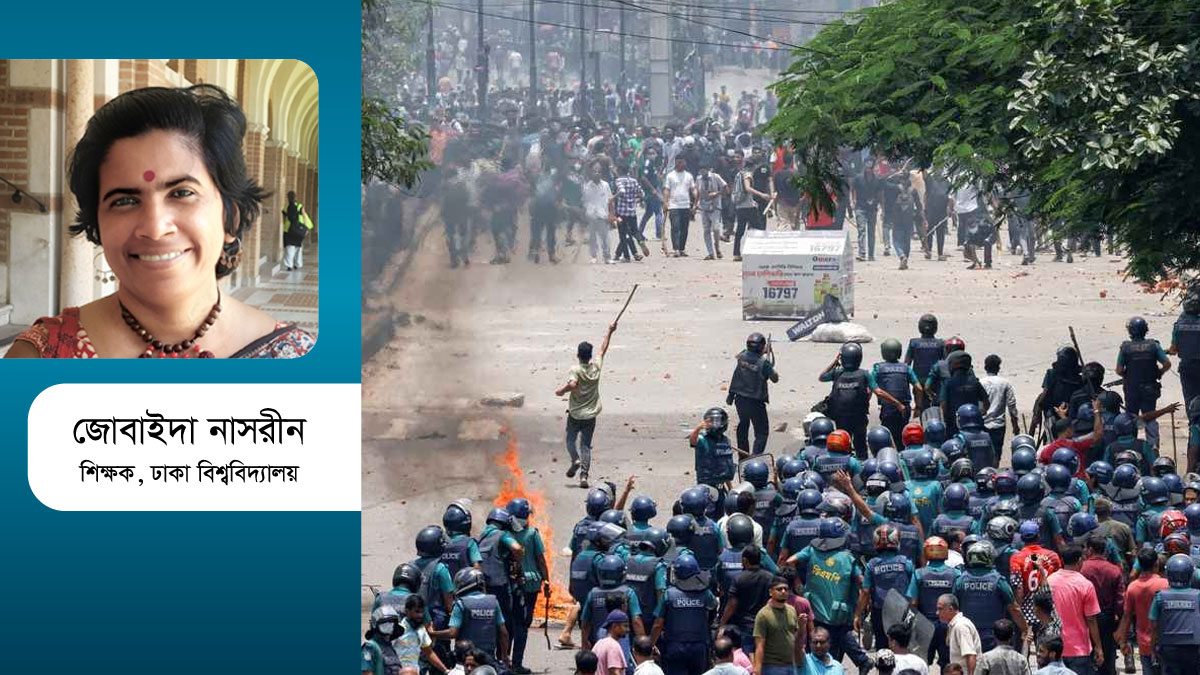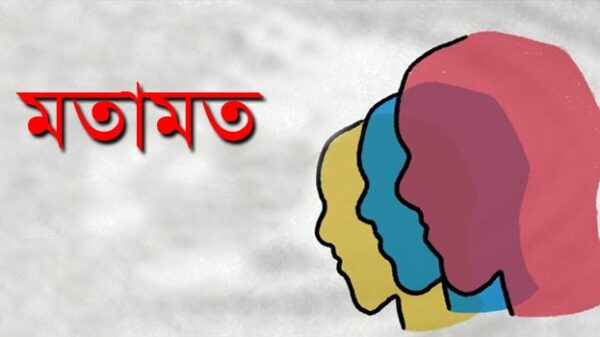Why do people behave violently?

Photo: Collected

Published: 07:37 3 August 2024
Violence is a complex and multifaceted phenomenon that has affected human society since the dawn of civilization. Understanding the reasons behind violence and violent behavior is critical to developing effective prevention strategies and creating a safer environment. By examining factors such as biological predispositions, psychological states, social environment, and cultural influences, it provides insight into why individuals engage in violence.
Unstable environment prevails in Bangladesh. As many students have lost their lives, the country and the people of the country have suffered economic losses, as well as psychologically and socially, people are also greatly affected, as well as the country's image and international status. I believe that understanding the magnitude of the problem—why people behave violently—needs to be examined from different theoretical disciplines.
Psychological theories look at individual mental processes and emotional states that may contribute to violent behavior. Personality disorders, such as antisocial personality disorder and borderline personality disorder, are often associated with tendencies toward aggression and violence.
On the other hand, sociological theories examine the influence of social structures, relationships, and cultural norms on violent behavior. According to Robert Merton, strain theory posits that social pressures to achieve certain goals, such as wealth and success, may cause individuals to engage in criminal behavior when they lack legitimate means to achieve these goals. The frustration and stress caused by this disparity can manifest as violence, especially among those who feel marginalized or oppressed.
On the other hand, proposed by Albert Bandura, social learning theory suggests that people learn violent behavior by observing and imitating others. Individuals who are exposed to violence in their family, community, or media may come to see such behavior as acceptable and replicate it in their own lives. This theory highlights the importance of role models and the social environment in shaping behavior.
Also in labeling theory, Howard argues that being labeled as 'criminal' or 'deviant' can reinforce and perpetuate violent behaviour. When individuals are stigmatized by society, they may internalize these labels and engage in violence as a means of fulfilling their perceived roles. This theory highlights the influence of social reactions and stigma on individual behavior.
Additionally, Travis Hersey's social control theory focuses on why people do not commit crime, suggesting that strong social bonds and attachments to family, friends, and institutions can prevent individuals from engaging in violence. When these bonds are weakened or broken, individuals may feel less constrained by social norms and more likely to engage in deviant behavior. Cultural theories examine how cultural norms, values, and beliefs influence violent behavior. In some cultures, violence may be more accepted or even glorified as a means of settling disputes or achieving social status.
Cultural norms around masculinity, honor, and revenge can also play an important role in shaping violent behavior. Environmental factors, including the immediate physical and social environment, play an important role in influencing violent behavior.
For example, poverty is a major environmental factor that contributes to violence. Poor populations often have limited access to resources and education, which can lead to feelings of hopelessness and despair. The resulting stress and lack of opportunity for legitimate success may drive individuals to violent behavior as a means of survival or expression of dissatisfaction.
Violence is a complex and multifaceted phenomenon that has affected human society since the dawn of civilization. Understanding the reasons behind violence and violent behavior is critical to developing effective prevention strategies and creating a safer environment.
Again, exposure to violence within the community or family may normalize aggressive behavior and increase individuals' likelihood of engaging in violence. Children who witness or are victims of domestic violence are at risk for violent tendencies themselves. As these individuals grow older, violent tendencies persist and continue to exhibit learned aggressive behaviors.
The question of why people commit violence is complex and multifaceted, encompassing a range of biological, psychological, sociological, environmental, and cultural factors. Biological predispositions, such as genetic markers and neurobiological vulnerabilities, may increase the likelihood of violent behavior. Psychological factors, including personality disorders and childhood trauma, also play an important role.
Sociological theories emphasize the influence of social structures, relationships, and cultural norms on violent behavior, while environmental factors such as poverty, exposure to violence, and crime may occur. Understanding the various factors that contribute to violent behavior is essential to developing effective prevention and intervention strategies.
By addressing the root causes of violence and promoting a holistic approach that includes individual, social and environmental factors, society can work towards reducing the prevalence of violent behavior and creating a safer and more just world.
Now let's come to the recent quota movement of 2024 in Bangladesh. The issue is seen as a significant social and political issue where initially the common students came together and started a movement to reform the existing quota based recruitment system in all types of government jobs.
The movement began as a protest against the quota system in government jobs, which allocated a significant portion of posts to certain groups, including descendants of the 1971 freedom fighters, ethnic minorities and others. Students of various educational institutions have demanded to reduce these quotas to ensure merit-based recruitment.
Currently, if we want to analyze the violent and unstable conditions that have been created in the wake of the quota reform movement in Bangladesh, then it is important to analyze it politically rather than the theoretical aspects of other criminology. Because, after the judgment of the High Court on June 4, students became vocal against him in all areas including social media.
Although Dhaka University started this movement, the movement turned violent after ordinary students were assaulted by Chhatra League. Along with ordinary students, students of various educational institutions across the country participated in the movement. As a result, we have seen clashes between students with police and members of political organizations in various districts including Dhaka, vandalism and looting of various government and private establishments.
In the context, numerous deaths, more than a thousand arrests, curfews have been created. As a teacher, I never believe that ordinary students will vandalize metro stations, set fire to toll plazas, vandalize BTV buildings, kill and hang policemen in the name of agitation.
The state also needs to gain economic momentum in reactivating the damaged infrastructure. Just as the students who have sacrificed their lives for their demands, it is necessary to conduct a fair investigation and bring those involved under the law, as well as those who created violence and harmed the country by using the shield of students, it is also necessary to identify them impartially.
The students' movement was a peaceful movement, so who or what gave rise to such violence, inferno? The government is blaming other political parties, whose stance is against independence. Opposition parties are blaming the government. But it is not possible to come to any solution by making such accusations.
Traditional theories about the causes of violent behavior do not apply to recent movements. Among them, according to Merton's concept, people can become violent if legitimate goals are not achieved by legitimate means. For the youth who compete for these government jobs, it is important that the government job policy reflects their expectations in a fair proportion.
It is true, if very sad, that the loss of Bangladesh is irreparable in the fresh talented souls that have been lost. The state also needs to gain economic momentum in reactivating the damaged infrastructure. Just as the students who have sacrificed their lives for their demands, it is necessary to conduct a fair investigation and bring those involved under the law, as well as those who created violence and harmed the country by using the shield of students, it is also necessary to identify them impartially.
It is important to restore the mutual trust between the government and the general public after the High Court verdict, and ensure that the government as the guardian of the country does not lose even a fresh soul.
Khandkar Farzana Rahman. Associate Professor and Ex-Chair, Criminology, University of Dhaka
(Currently PhD student at University of Illinois at Chicago, USA)
Advertisement
Most Readed - Opinion
- Human chain of university teachers and students to protest against dumping of waste in Tangail
- 1 person was hacked to death with a sharp weapon in Naogaon
- City College-Dhaka College Students Clash ScienceLab Battlefield
- Awami League candidate in ad-hoc committee in Sreepur created public anger
- Patriotic armed forces are the symbol of our pride and unity : VCC
- Jamaat will apologize if the mistake of 71 is proven
- Argentina returned to victory with Messi-Martinez skill
- Despite the relief in winter vegetables, the price of onion and potato is not decreasing
- Panchagarh fined 20,000 rupees in campaign against polythene declared banned
- Ragging on EB; Five students took the victim's case to court
- More News is hiring for various positions
- A farmer was hacked and injured due to a land dispute in Madaripur
- Expectations of Islamic University students from the new VC
- Who is getting Messi's 10 and Di Maria's jersey number 11 in the Argentina team?
- Salman F. Rahman's enjoyment of sharing the presentation!
- Shah Rukh went to sleep at 5 in the morning, what time did he get up?
- How to understand that the image is created with AI
- President of Applied Nutrition and Food Technology Department. Hafizur
- Will India return Sheikh Hasina in the murder case? What is in the Dhaka-Delhi agreement?
- Long live the dreamer Sheikh Kamal in the heart of youth




